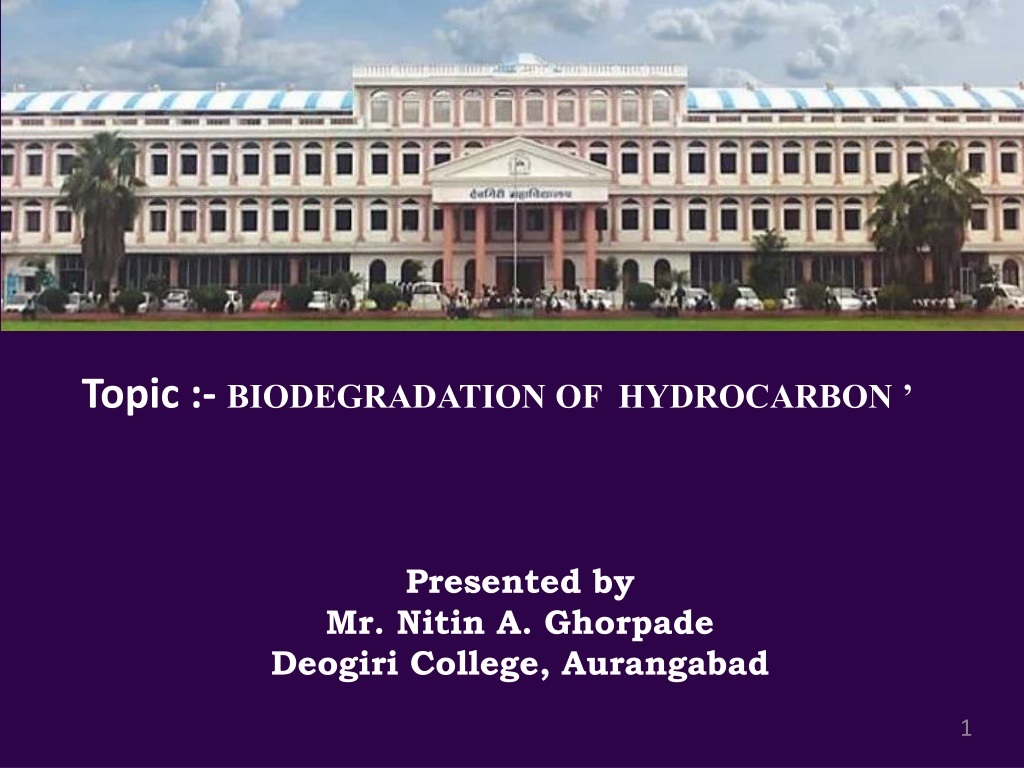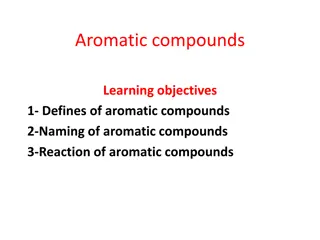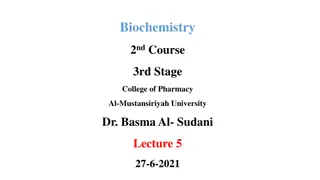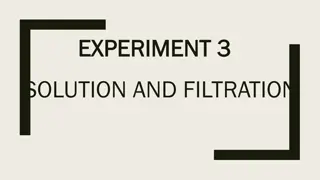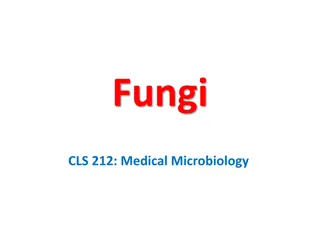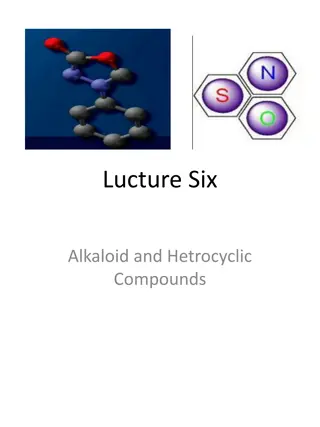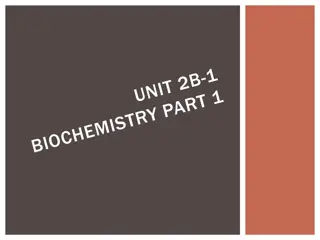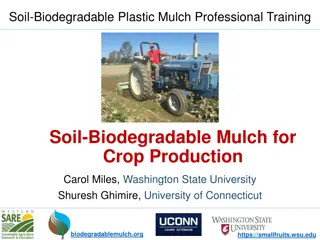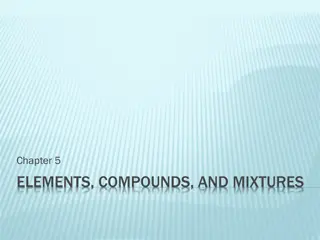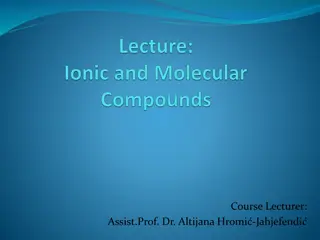Biodegradation of Hydrocarbon and Xenobiotic Compounds
Biodegradation is the process of biological transformation of organic compounds by living organisms. This presentation delves into the biodegradation process, microbes involved, reactions, factors affecting biodegradation, genetic engineering applications, and the fate of xenobiotic compounds. It covers the properties of xenobiotic compounds, their fate, biotransformation, mineralization, accumulation, and polymerization. The content also includes a list of some xenobiotic compounds and highlights the microbes used in biodegradation of various chemicals and hydrocarbons.
Download Presentation

Please find below an Image/Link to download the presentation.
The content on the website is provided AS IS for your information and personal use only. It may not be sold, licensed, or shared on other websites without obtaining consent from the author.If you encounter any issues during the download, it is possible that the publisher has removed the file from their server.
You are allowed to download the files provided on this website for personal or commercial use, subject to the condition that they are used lawfully. All files are the property of their respective owners.
The content on the website is provided AS IS for your information and personal use only. It may not be sold, licensed, or shared on other websites without obtaining consent from the author.
E N D
Presentation Transcript
Topic :- BIODEGRADATION OF HYDROCARBON Presented by Mr. Nitin A. Ghorpade Deogiri College, Aurangabad 1
BIODEGRADATION OF HYDROCARBON
SYNOPSIS INTRODUCTION. BIODEGRADATION PROCESS. MICROBESINVOLVED. REACTIONS IN BIODEGRADATION PROCESS. BIODEGRADATION OFHYDROCARBONS. a) aromatic hydrocarbon. b) polycyclic hydrocarbon. c)halogenated hydrocarbon. FACTORS AFFECTING BIODEGRADATION. GENETIC ENGEENERING FOR BIODEGRADATION. CURRENTSTATUS CONCLUSION. REFERENCE.
INTRODUCTION Biodegradation is a phenomena ofbiological transformation of organic compounds by living organisms where as, Biotransformation Means incomplete biodegradation of organic compounds.
What is xenobiotic compound? means Xenos means (foreign)so ,it refers toun natural foreign and synthetic chemicals suchas pesticides ,herbicides ,refrigerants solvents and otherorganic compounds.
Properties of xenobiotic compounds. They become recalcitrant i.e resist biodegradation and persist in environment. Highily stable. Insoluble in water or adsorbedto external matrices. Larger molecular size. Lack of permease needed fortransport into microbial cells.
FATE OF XENOBIOTIC COMPOUNDS XENOBIOTICS BIOTRANSFORMATION MINERALIZATION ACCUMULATION POLYMERIZATION
BIODEGRADATION PROCESS Inorganic nutrients Molecular oxygen New cells Organic molecules Co2 ,H2o cell ph Other metabolic products temp
LIST OF SOME XENOBIOTIC COMPOUNDS. DICHLOROBENZENE POLYCYCLIC AROMATIC HYDROCARBIN. DDT ALDRIN CARBON TETRECHLORIDE. BHC HEXACHLOROETHANE
MICROBES USED IN BIODEGRADATION CHEMICALS MICROBES HYDROCARBONS Pseudomonas,Nocardia,Art hrobacter,Mycobacterium. Pseudomonas,Candida,Alca ligens. Pseudomonas,Flavobacteri um,Trichosporum,Bacillus,A spergillus. PCBS PHENOLICS Arthrobacter,Nocardia,Alcal igens. POLY CYCLIC AROMATIC COMPOUNDS
M E T AB O L I C E F F E C T O F M I C R O O R G A N I S M S XE N O B I O T I C S ON DETOXIFICATION ACTIVATION DEGRADATION CONJUGATION
TYPES OF REACTIONS INVOLVED IN BIODEGRADATION AEROBIC DEGRADATION. ANAEROBIC DEGRADATION. SEQUENTIAL DEGRADATION.
Hydrocarbon degrades as follows: ALDEHYDE HYDROCARBON AICOHOL FATTYACID FURTHER METABOLIZED
BIODEGRADATION OF HYDROCARBON Hydrocarbons mainly pollutants from oilrefineries and oil spills.it can be degraded by consortium or cocktail of microorganisms. eg. Pseudomonas, Corynebacterium,Arthrobacter etc.
AROMATIC HYDROCARBON Through aerobic and process. Important micro organism Pseudomonas. Biodegradation of AH require sequence of reaction--- 1) Removal of sidechain 2) Opening of benzenering
CATECHOL AND PROTOCATECHUATE METACLEAVAGE ORTHO CLEAVAGE PYRUVATE &ALDEHYDE. ACETYL-CoA
POLYCYCLIC HYDROCARBON Contain two or more rings. 1 terminalring attached by deoxygenase. Other ring is catabolized.
FEATURES OF DEGRADATION Amide, ester or ether bonds are 1st attacked& further degradation of the products so generated take place. If these bonds areabsent or in accessible, aliphatic chain aredegraded. If the aliphatic chains are branched, the aromatic components of complexmolecular may be may be attached.
DEGRADATION OF POLYCYCLIC HYDROCARBON
BIODEGRADATION HOLOGENATED AROMATIC COMPOUNDS Rate of the degradation is inverselyrelated to no of halogen atoms that areoriginally presents on target molecule. Compounds which higher number of halogen less easily degrade. Involves two steps--- 1) Elimination of halogengroup. Degradation of non halogenatedproduct molecule.
GENETIC ENGINEERING AS AN EFFICIENT STEPS FOR BIODEGRADATION 1 genetic manipulation by plasmid transfer 1st successful develop of new stainof bacterium (Pseudomonas) by manipulation of plasmid transfer was done by Chakrabarty & co worker in 1970. Used different plasmid & constructednew bacterium known as SUPERBUG Degrade camphor, octane, xylene& naphthalene.
XENOBIOTIC AND THE PLASMID CONTANING GENE xenobiotic Name of plasmid in pseudomonas NAPTHELENE NAH XYLENE XYL XYLENE & TOULENE TOL,PWWO,XYL-K SALICILATE SAL
CURRENT STATUS Pseudomonas putida: Ithas been found to be useful in detection of certain chemicals,suchas land mines. P.putida is utilized as a way ofdetecting land mines form soilcontents. 3. It is found that there is a linkage between the bacterias ability todegrade TNT & explosive compound found in land mines. 1. 2.
Nitrosomonas europea: 1. It has nitrogen oxidizingproperties. 2. Its metabolism has been studied under ammonia rich conditions and isrecognized as limiting reactants in the conversion of ammonia. Methylibium petroleiphilum: 1. it has ability to completely mineralizemethyl tert -butyl ether (MTBE) ,a gasolineadditive. 2. It is capable of consuming diverse rangeof gasoline derivatives as its sole carbon source.
